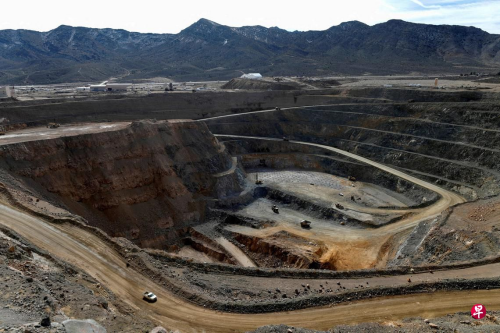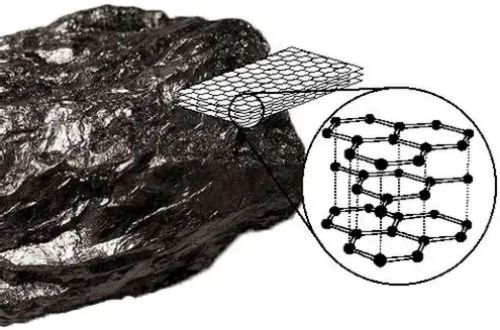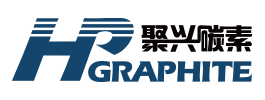【Graphite】U.S. Department of Energy Announces Funding Initiatives to Safeguard Supply...

Graphite electrodes are primarily used in electric arc furnace (EAF) steelmaking, serving as a crucial high-temperature conductive material. They are also widely applied in the aluminum industry, electrolytic cells, and chemical equipment as conductive and heat-resistant components.
【Graphite】U.S. Department of Energy Announces Funding Initiatives to Safeguard Supply Chains of Graphite and Other Critical Minerals and Materials
On August 13, the U.S. Department of Energy (DOE) announced a total of $1 billion in grant funding (NOFO – notices of funding opportunities) to advance and expand mining, processing, and manufacturing technologies across key segments of the critical minerals and materials supply chain. This proposed funding will be used to accelerate the development of the U.S. critical minerals and materials industry.

These funding announcements from Washington are issued under President Trump's Unleashing American Energy Executive Order released in January this year, aiming to ensure the security, predictability, and affordability of the supply of critical minerals and materials essential to U.S. energy leadership, national security, and industrial competitiveness.
U.S. Secretary of Energy Chris Wright stated: "For too long, America has relied on foreign sources to supply and process critical materials essential to modern life and national security. Under President Trump's leadership, the DOE will lead efforts to bring critical material processing back home and expand domestic supply of these indispensable resources."
The proposed NOFOs announced include:
Critical Minerals and Materials Accelerator (CMM Accelerator)
The DOE's Office of Advanced Materials and Manufacturing Technologies is expected to release up to $50 million in grant funding early this fall. The CMM (Critical Minerals and Materials) Accelerator aims to advance technology maturity, leverage capital investment, and drive domestic commercialization. Proposed NOFO focus areas include: rare earth magnet supply chain processes; refining and alloying of gallium, gallium nitride, germanium, and silicon carbide for semiconductors; cost-competitive direct lithium extraction and separation technologies; and separation technologies for critical materials that co-produce valuable products from by-products and waste.
Mine and Metal Capacity Expansion — Industrial Facility Pilots for Byproduct Recovery of Critical Minerals and Materials in the U.S.
The Office of Fossil Energy and Carbon Management plans to release a NOFO providing approximately $250 million in funding to support U.S. industrial facilities capable of producing valuable critical mineral byproducts from existing industrial processes. To reduce technical uncertainties and the financial risks of commercial deployment, many of these technologies must be piloted at industrial scale within facilities that already have feedstock processing capabilities. The proposed NOFO will be open to the entire industry, including coal-based sectors.

Rare Earth Elements Demonstration Facilities
The DOE's Office of Manufacturing and Energy Supply Chains (MESC) plans to release up to $135 million in NOFO funding to strengthen the U.S. rare earth elements (REE) supply chain. This program aims to demonstrate the commercial feasibility of refining and recovering rare earth elements from mine tailings, hazardous materials, and waste streams, thereby reducing U.S. dependence on foreign REE sources. Project teams must include academic partners, and recipients must provide at least 50% cost-sharing.
Battery Materials Processing, Manufacturing, and Recycling Grant Program
MESC also plans to release up to $500 million in NOFO funding to expand U.S. critical minerals and materials processing, as well as derivative battery manufacturing and recycling. The proposed funding opportunities will support demonstration or commercialization facilities capable of processing, recycling, or manufacturing with critical materials. These materials include traditional battery minerals (lithium, graphite, nickel, copper, aluminum) as well as other minerals found in commercial batteries (such as rare earth elements). Recipients must provide at least 50% cost-sharing.
Recovering Critical Minerals from Industrial Wastewater
The Advanced Research Projects Agency–Energy (ARPA-E) plans to announce the selection results this fall for a $40 million program aimed at developing technologies to recover critical minerals from industrial wastewater. ARPA-E's RECOVER (Realize Energy-rich Compound Opportunities Valorizing Extraction from Refuse waters) program will enable the U.S. to reduce reliance on critical mineral imports by substituting with safe domestic sources. Large amounts of critical minerals currently remain untreated and wasted in U.S. wastewater systems. RECOVER technologies could complement traditional mining operations, extract these materials, and potentially meet a significant portion of U.S. demand while avoiding resource waste.
Feel free to contact us anytime for more information about the Graphite Products market. Our team is dedicated to providing you with in-depth insights and customized assistance based on your needs. Whether you have questions about product specifications, market trends, or pricing, we are here to help.
No related results found








0 Replies